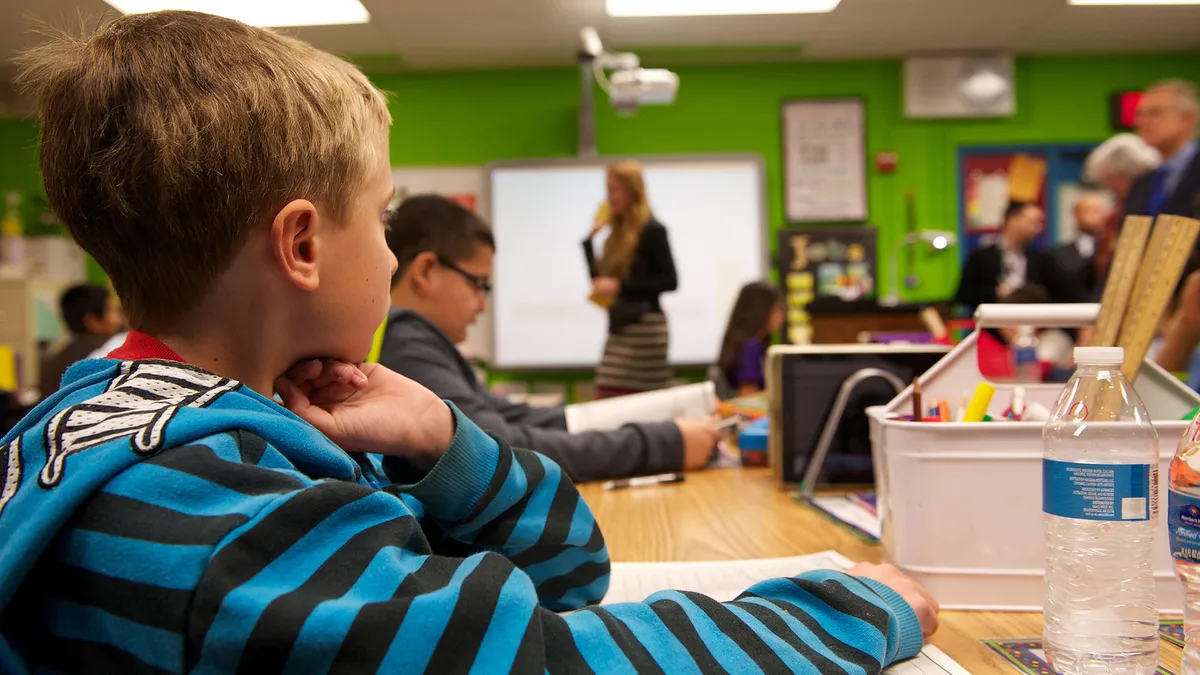Dive Brief:
- The California Charter Schools Association has released a list of guidelines for successful special education programs, based on research on best practices from 10 schools across the state.
- The toolkit focuses on such tenets as inclusive policies, family and community support, and a supportive community as being critical for student success, but also emphasizes personalization, the use of cutting-edge technology, and flexible and autonomous programs as being critical.
- Also important, according to the association, is adequate professional development and "constant refinement and improvement of programs."
Dive Insight:
In a recent interview with Education Dive, Beacon College President George Hagerty said students with learning disabilities require additional support, but the approaches to teaching and learning do not have to be drastically different than the approaches taken to educate other students, and the new guidelines from the California Charter Schools Association seem to suggest the same. Cutting-edge technology and taking a personalized approach to learning are key to student success, regardless of whether the student has a diagnosis.
Most experts agree that full integration into the general education classroom environment is the best policy for special education students. But integration without adequate staffing does not help any of the students in the class. Not only do teachers need to be properly trained to address these students' learning challenges, but there must be a sufficient number of paraeducators and other support personnel to provide additional support in the classroom.
There is a common theme in conversations with those who have had great success in working with groups of students who are traditionally considered disadvantaged, whether special education students, students of color, students from low-income backgrounds or other underrepresented groups: Provide proper levels of staff support and development, creating one-to-one coaching and mentoring opportunities for students to access often, and having educators who believe students can achieve at higher levels and push them to achieve more.












